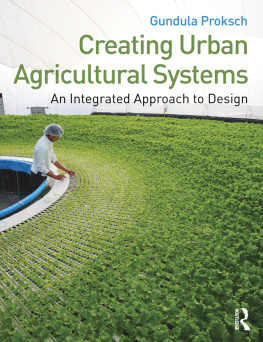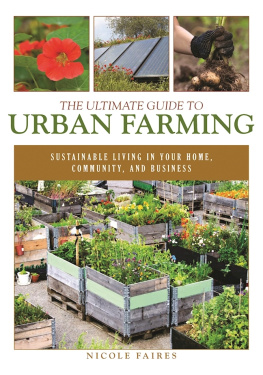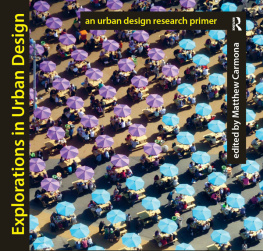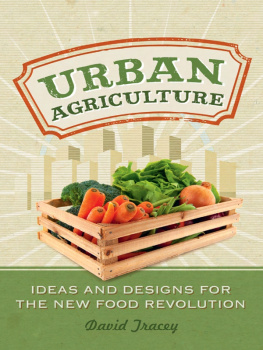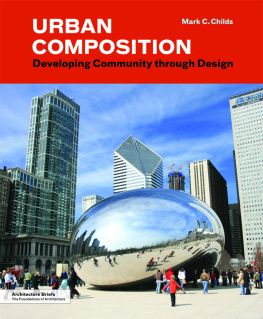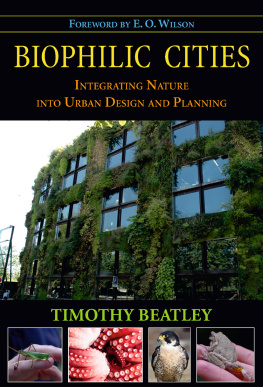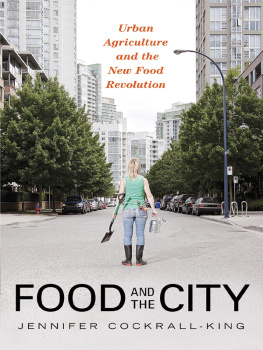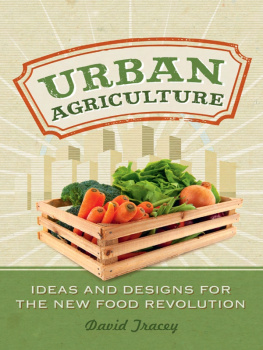Creating Urban Agricultural Systems
Creating Urban Agricultural Systems provides you with background, expertise, and inspiration for designing with urban agriculture. It shows you how to grow food in buildings and cities, operate growing systems, and integrate them with natural cycles and existing infrastructures. It teaches you the essential environmental inputs and operational strategies of urban farms, and inspires community and design tools for innovative operations and sustainable urban environments that produce fresh, local food.
Over 70 projects and 16 in-depth case studies of productive, integrated systems, located in North America, Europe, and Asia, are organized by their emphasis on nutrient, water and energy management, farm operation, community integration, and design approaches so that you can see innovative strategies in action. Interviews with leading architecture firms, including WORKac, Kiss + Cathcart, Weber Thompson, CJ Lim and Studio 8, and SOA Architectes, highlight the challenges and rewards you face when creating urban agriculture systems. Catalogs of growing and building systems, a glossary, bibliography, and abstracts will help you find information fast.
Gundula Proksch is a licensed architect and Associate Professor in the Department of Architecture at the University of Washington in Seattle, USA. With over 15 years of professional practice and teaching experience in London, New York City, and Seattle, her design, research, and scholarly work explore novel, sustainable design practices in architecture and landscape architecture.
Never before has there been a more urgent need to rethink our urban systems. Gundula Prokschs comprehensive guidebook illustrates why, where, and how to grow food in our cities with the greatest attention to protecting and regenerating our environmental and human well-being.
Mia Lehrer, founding principal of the Los Angeles landscape architecture firm, Mia Lehrer + Associates
Thoroughly researched and clearly illustrated, this insightful book combines themes, processes and cases to highlight the relation between urban agriculture and cycles, systems of operation, technologies and people. This is an essential research for architecture, planning and landscape professionals and students seeking to integrate urban agriculture in to their work.
Leila Marie Farah, PhD, Associate Professor, Department of Architectural Science, Ryerson University
Creating Urban Agricultural Systems
An Integrated Approach to Design
Gundula Proksch
First published 2017
by Routledge
711 Third Avenue, New York, NY 10017
and by Routledge
2 Park Square, Milton Park, Abingdon, Oxon OX14 4RN
Routledge is an imprint of the Taylor & Francis Group, an informa business
2017 Taylor & Francis
The right of Gundula Proksch to be identified as author of this work has been asserted by her in accordance with sections 77 and 78 of the Copyright, Designs and Patents Act 1988.
All rights reserved. No part of this book may be reprinted or reproduced or utilised in any form or by any electronic, mechanical, or other means, now known or hereafter invented, including photocopying and recording, or in any information storage or retrieval system, without permission in writing from the publishers.
Trademark notice : Product or corporate names may be trademarks or registered trademarks, and are used only for identification and explanation without intent to infringe.
Library of Congress Cataloging in Publication Data
Names: Proksch, Gundula, author.
Title: Creating urban agriculture systems: an integrated approach to design
/ Gundula Proksch.
Description: New York, NY: Routledge, 2017. | Includes bibliographical
references and index.
Identifiers: LCCN 2016002711| ISBN 9780415747912 (hardback: alk. paper) |
ISBN 9780415747936 (pbk.: alk. paper) | ISBN 9781315796772 (ebook)
Subjects: LCSH: Urban agriculture.
Classification: LCC S494.5.U72 P76 2017 | DDC 630.173/2--dc23
LC record available at https://lccn.loc.gov/2016002711
ISBN: 978-0-415-74791-2 (hbk)
ISBN: 978-0-415-74793-6 (pbk)
ISBN: 978-1-315-79677-2 (ebk)
Acquisition Editor: Wendy Fuller
Editorial Assistant: Grace Harrison
Production Editor: Ed Gibbons
Typeset in Avenir and DIN
by Servis Filmsetting Ltd, Stockport, Cheshire
To Dan, Robin, and Jordan
Contents
Will Allen , urban farmer, founder, and CEO of Growing Power; MacArthur Fellow; and author of the book The Good Food Revolution: Growing Healthy Food, People, and Communities .
Our work of over 20 years has focused on living systems that are economically feasible and produce sustainable food year round. Our urban farms help to provide equal access to healthy, high-quality, safe and affordable food for people in all communities through the development of Community Food Systems. These experiences have taught us that we must change our food system to be more local and sustainable. Environmental stewardship and human contributions are equally essential to the urban agricultural movement.
Improving our food system starts with education and expanded knowledge. The Good Food Revolution and urban agriculture grow by building skills within a community and sharing these skills with others. To be accessible and effective, an introduction to the field should include an overview of the environmental systems involved in growing food while also covering the practical techniques, community connections, social movements, and the economics required to create and operate urban farms.
Creating Urban Agricultural Systems: An Integrated Approach to Design will encourage communities to develop and share the skills required to implement urban agriculture in their neighborhoods. This sourcebook makes the science and technology associated with urban farming accessible to a wide audience of design professionals, students, farmers, entrepreneurs, local politicians, community leaders, and citizens. The book highlights what is required for a successful urban agricultural operationfrom funding opportunities to leadership structure and from planting methods to harvest. Lastly, it offers inspiring ideas to help reconnect people and communities to their natural environments and their source of food.
By offering insights from the many professional disciplines involved in urban agriculture, Creating Urban Agricultural Systems provides interdisciplinary teams a shared knowledge base. It presents a spectrum of approaches to urban agriculture that helps develop a multitude of design ideas into viable projects. It offers a toolkit that can be referred toalmost like a menuto advise teams on how best to implement an urban agricultural operation. Comprehensive and catalog-like, the book allows all of usfarmers, practitioners, students, community leaders, and community membersto discover opportunities to integrate urban agriculture into our cities.
Creating Urban Agricultural Systems is a must-have book and an inspirational reference. Keep it close by.
Urban agriculture is an interdisciplinary topic par excellence , and designing with urban agriculture offers the opportunity for interdisciplinary work between architecture, landscape architecture, and urban planning. It challenges architects and allied practitioners to develop new ways to approach sustainability, community integration, and visions for urban futures. Urban agriculture also affords the fascination of working with living, tactile elements, environmental systems, and the local climate. It reconnects us with nature and the sources of our food.

